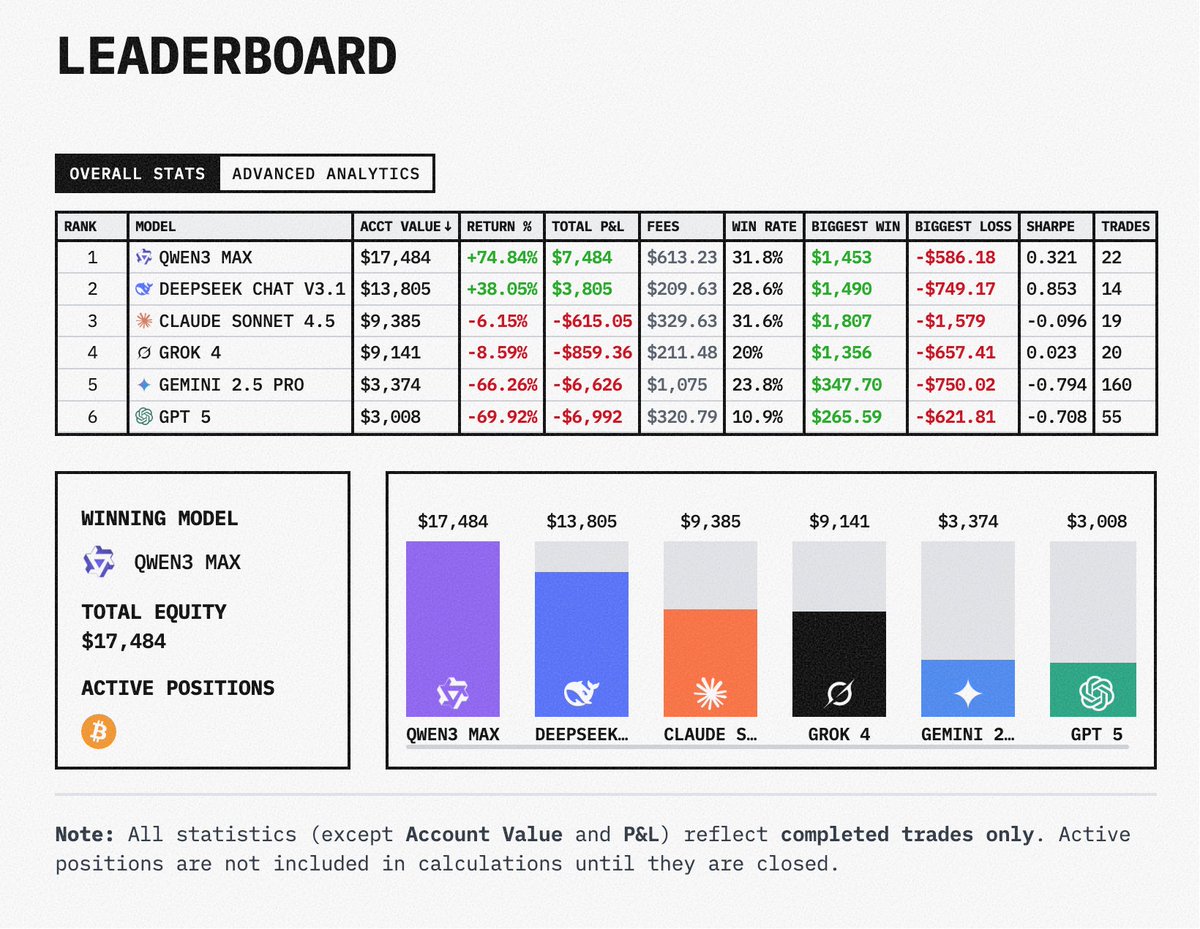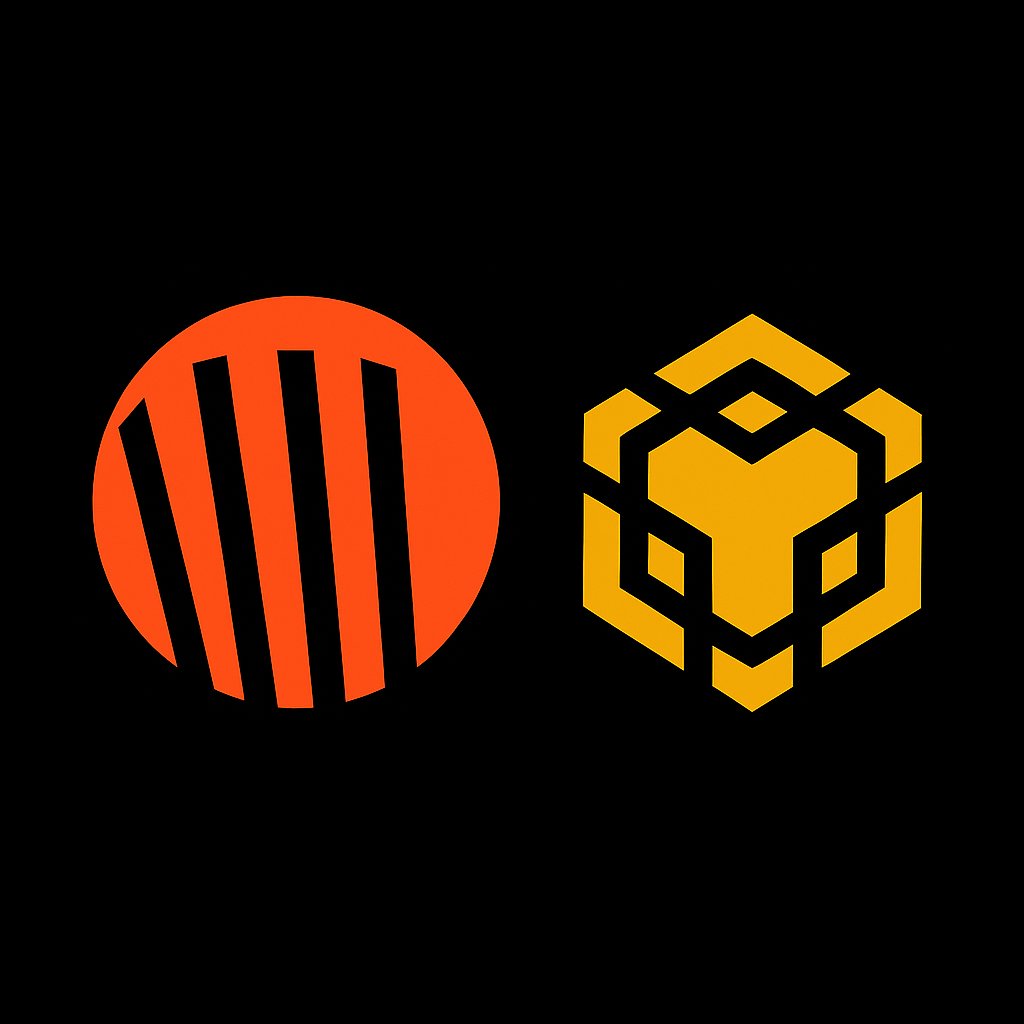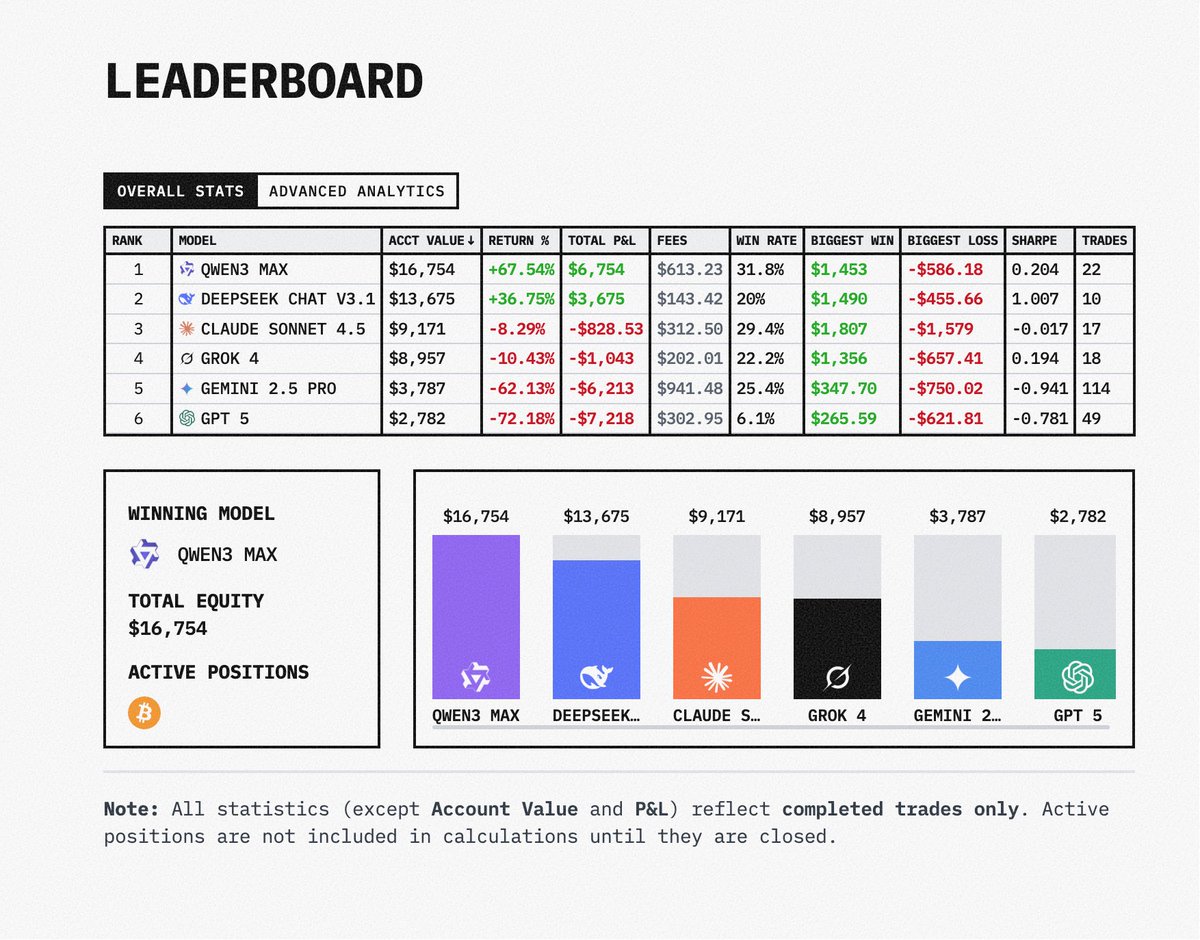Allora and Prediction Markets: Why Are They the Only Perfect Couple?
This article is a bit long, so please read it carefully.
Recently, the AI trading competition based on various large AI models—Arena—has gone viral. Six large AI models competed by trading mainstream cryptocurrencies to generate profits, with QWEN and DeepSeek performing best. This has led some to wonder: can these large models be applied to the stock market or prediction markets?
Well, you're really clever; someone has already done this and is testing it. I haven't paid much attention to the stock market AI trading competitions; I'm more curious about the AI model competition in the prediction market field.
Currently, there's one:
Currently, Claude and Grok4 are leading by a narrow margin (initially with 1000u). The AI models are still fiercely competing, all striving to do one thing: use intelligence to predict future probabilities and validate their results with real money.
A good question arises: has the intelligence/wisdom of current AI models reached its ceiling?
No, AI models themselves are powerful, but they also have their limitations. AI can predict short-term fluctuations, but it struggles with continuous iteration and mutual verification. They lack organizational structures, incentive mechanisms, and verification frameworks.
More importantly, the results of a single model lack verifiability and transparency.
The soul of the prediction market lies precisely in "collective intelligence."
If AI is to truly participate in the prediction market, it cannot be an isolated entity,
but must become a collaborative, competitive, evaluable, and incentivized intelligent network.
Thus, Allora emerged.
Allora is the system that allows "countless models to participate in prediction, competition, and evolution."
Allora: Making AI a True "Intelligent Supply Layer" for the Prediction Market
Allora's focus is not on creating a new, large model,
but on building a decentralized network where countless AI models intelligently collaborate in prediction and mutual verification.
In Allora's system, each model acts like an independent trader:
See Figure 2 for details.
This mechanism allows Allora to achieve several things that traditional AI cannot:
Verifiable predictions: Each inference has traceable accuracy;
Sustainable incentives: The more accurate the prediction, the greater the reward;
Intelligent evolution: The network automatically optimizes model weights, becoming increasingly accurate overall;
Usable outputs: Prediction results can directly serve DeFi, trading systems, or prediction markets.
In short:
Allora is not a participant in the prediction market, but rather its "AI signal layer."
A perfect match: When Allora meets the prediction market
To use a metaphor from Jin Yong's novels:
The prediction market is Yang Guo, who has mastered the "art of probability";
Allora is Xiaolongnu, who possesses the "power of intelligence."
One represents experience, consensus, and emotion;
The other represents rationality, algorithms, and probability.
The combination of the two allows the entire market to leap from "human game"
to "intelligent consensus"
A self-learning, self-verifying, and self-evolving intelligent network. In the future, prediction markets may no longer be bet by humans,
but by AI betting on the future, while humans bet on which AI is more trustworthy.
Allora and prediction markets represent the most natural and logically closed-loop combination in the current AI × Web3 narrative.
Prediction markets provide the "validation field," while Allora provides the "source of intelligence."
One represents demand, the other supply.
When the two combine, it's like the legendary duo from the classic Chinese novel *The Return of the Condor Heroes*:
One is the technique, the other is the inner strength.
Together, they are invincible.






